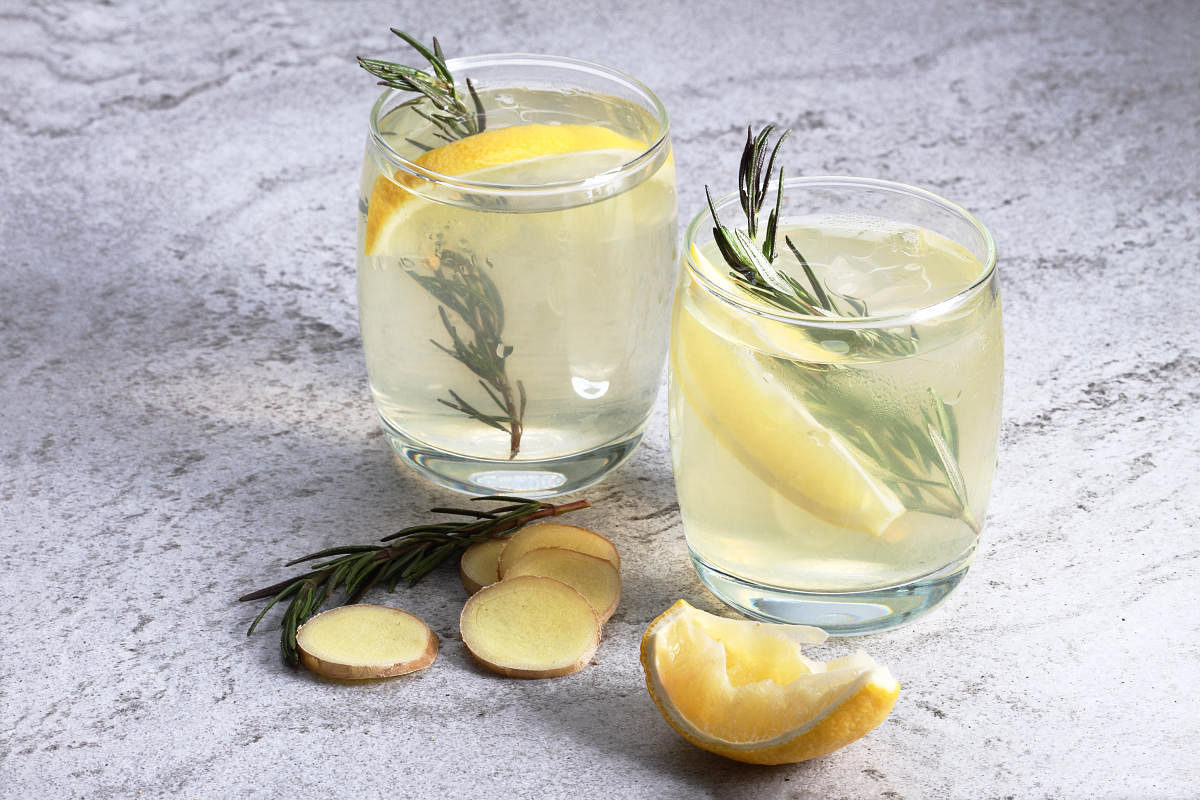

There’s an inherent zest about citrus fruits that leaves you feeling fresh and upbeat because they are not only appealing to look at but also taste and smell divine. They are loaded with immune-boosting Vitamin C and are also rich in fibre, help reduce the duration and severity of cold, are packed with potassium, and help in absorption of other nutrients. They also have a low glycemic index that reduces blood sugar levels, lowers the risk of heart diseases, and results in weight loss. The citrus fruits that one can enjoy in India include oranges, lemons, and limes.
Even the zest of the citrus fruits has abundant benefits as it improves the immune system and treats gallstones, and is good for oral health. So, the next time you pick a citric fruit for any recipe, hold onto the peels and put them to use. Here’s raising a toast to the burst of versatile flavours in this simple glass of cheer!
Lemon Ginger Squash
Ingredients
Lemon juice: 2 cups
Sugar: 2 kg
Water: 3 cups
Ginger juice: 3 tbsp
Dry ginger powder: 1 tbsp
Method
Mix sugar and water in a big vessel. Set aside overnight.
The next day, add fresh ginger juice, ginger powder and mix well. Boil this mixture till the sugar dissolves. Use a muslin /clean cotton cloth to strain this mixture.
Boil the mixture once again till the sugar syrup becomes thick and it reaches the two-string consistency.
Wash and pat dry lemons.
Slice the lemons and use a lemon squeezer to remove two cups of lemon juice.
Add this to the cooled sugar syrup.
Store in an air-tight sterilised glass bottle.
Use 1-2 tbsp of this squash and serve with chilled water/soda.
This mixture can be refrigerated.
Tips to use lemon without wasting any part of this wonder fruit:
Grate the zest of the lemon ensuring you avoid the white skin that might give a bitter aftertaste. The zest of lemon can add so much flavour to cookies, cakes, yoghurt, salads and even your tea. Alternatively, you can avoid removing the zest and use the peels to make lemon pickles.
(The writer is author of the cookbook Manna: Your Guide to Indian & Continental Cooking which is a result of her culinary journey during
which she documented some of the most sought-after heritage recipes of India and elsewhere.)
The peel meal
One of our readers, Priya Guruprasad, has shared a precious page from her cherished childhood memories. She writes: “This slightly unusual recipe is my nani’s. This recipe is unusual because it uses orange peels in a meal. My nani was adept in making use of anything available in the kitchen and prepare an awesome tasting dish in no time. During her younger days, money was hard to come by and the house was always full of relatives and thus she became the innovator. For me, my nani is my MasterChef. One may wonder as to why we should consume orange peel? Well, because it gives a completely different taste and feel! As per Ayurveda, orange peel is tikta (bitter) and has laghu and ruksha guna. Due to these properties, it effectively pacifies kapha and pitta and is useful in managing conditions that originated from an imbalance of these two doshas.
Orange Peel Powder
Ingredients
Oranges: 5 to 6
Urad dal: 2 tbsp
Pinch of tamarind
Red chilli: 2 to 3
Salt to taste
Method
Peel the orange. (Eat the juicy pulp). Tear the peel into small pieces. Dry these in the sun for 2 to 3 days. When you break it, it should be brittle enough and break with a sound. Then u know it is ready. In a kadai roast the dal and tamarind with few drops of oil. Once the dal smells aromatic, add the chilli. Make sure to keep the flame low. Once done, take it out on a plate and allow it to cool. In the hot kadai add the orange peel and roast for 1 to 2 min to make sure that all the moisture from the peel has gone. Switch off the flame and remove the peel from the kadai. Grind the dal, chilli and peel along with little salt. Store in an airtight jar in a cool dry place. It will stay fresh upto a month. Serve with hot rice and ghee or can use as idli/dosa podi.
One ingredient, one recipe
This column will celebrate food and explore the possibility of forming an invisible chain that will bind us together as a family. Picking the most important ingredient of ‘love’, we would want readers to send us a unique recipe that has either a childhood memory attached to it or, an interesting fact, or even a food philosophy they learned from their ancestors. We will hand-pick one unique recipe and publish it along with this column the following month. Please share your heritage recipe and story in 300 words with “Food Family: Love” mentioned in the subject line to dhonsunday@deccanherald.co.in by June 28.